IF YOU BUILD IT
Engineering in the Classroom
Introduction | Background Knowledge | Activities | Extensions | Standards
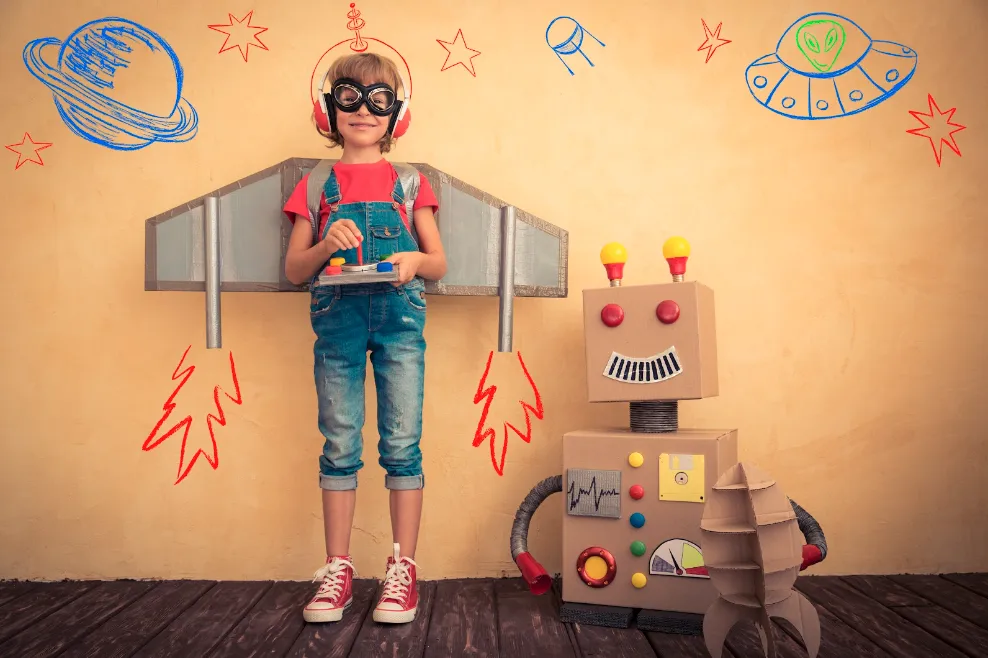
Introduction
Humans have faced problems since time began. An early man finds the perfect cave to live in, but a large, heavy boulder blocks the entrance. How can he move the boulder to make his home? He looks closely and sees a crack in the rock. He finds a smaller rock and pounds it into the crack. The boulder splits, and he can move the smaller pieces. The wedge was born, and early man learned to use it more easily to split rocks or wood. He engineered a solution to the problem at hand.
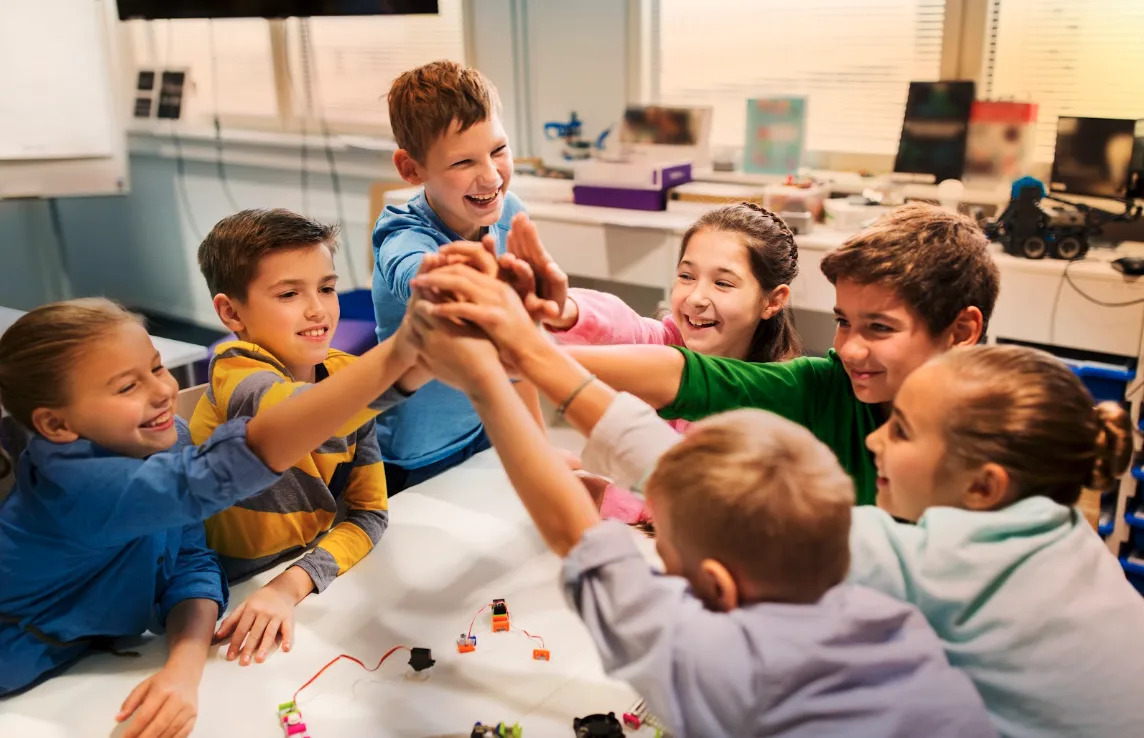
Background Knowledge
Engineering is an important part of STEAM (Science, Technology, Engineering, Art, and Mathematics) Education. It uses science and math to solve problems. Engineers take the theories and inventions created by scientists and mathematicians, figure out how to use them, and put them to practical use.
Simple machines are the earliest products of engineering. Early people identified a problem in their world and engineered (or devised) a way to solve their problems. Levers, wedges, and pulleys were created to move heavy things in the world. The wheel transformed the world and made moving people and things much easier.
As civilizations developed, engineering advanced as well. The ancient civilizations created engineering feats known as the Seven Wonders of the Ancient World. For example, ancient Egyptians built the Pyramids at Giza with three simple machines - the inclined plane, the lever, and the wedge.
The Muslim world during the Middle Ages gave the world many early engineering designs that set the stage for the modern world. The great minds of the era harnessed the power of the wind to create windmills and windpumps. The spinning wheel was invented during this time, and the first programmable machine was developed.
Engineering became a profession during the 1700s and grew during the Industrial Revolution. As the industry grew, people needed more efficient ways to meet demands. Engineers used science and math to solve the newly presented problems. Engineers designed canals and bridges to move products. Waterwheels supplied power to mills. From water to steam, engineers learned to harness steam, which led to the steam engine. Steamboats and steam engines were developed to move people and goods.
As time progressed, the movement of people, goods, and information became a catalyst for engineers. Engineering is divided into five major branches. Electrical engineering came out of the development of the electric telegraph and the electric motor. The field expanded as electricity became more widely used. As the world took to the skies, the field of aeronautical engineering was born. Civil engineering focuses on designing and implementing infrastructure such as bridges, roads, railways, and water supply. Mechanical engineering focuses on automated systems such as engines, compressors, robotics, and manufacturing. The final main branch of engineering is chemical engineering. This area of focus includes petroleum refining, commercial chemicals, and fermentation.
Engineers follow the Engineering Design Process to find solutions to presented problems. First, engineers define the problem and research the end users or existing solutions. Next, they will specify the design requirements and brainstorm multiple solutions. After analyzing and discussing the solutions, engineers will choose and refine the best solution. Then they will build and test a prototype. Throughout the process, teams will use the data to make changes and redesign, rebuild, or retest. Finally, engineers will communicate the results once the problem has been solved to the design specifics.
Engineering has solved many world problems and made it easier to move people, goods, and information. Using math and science to solve practical problems has propelled society forward since early man.
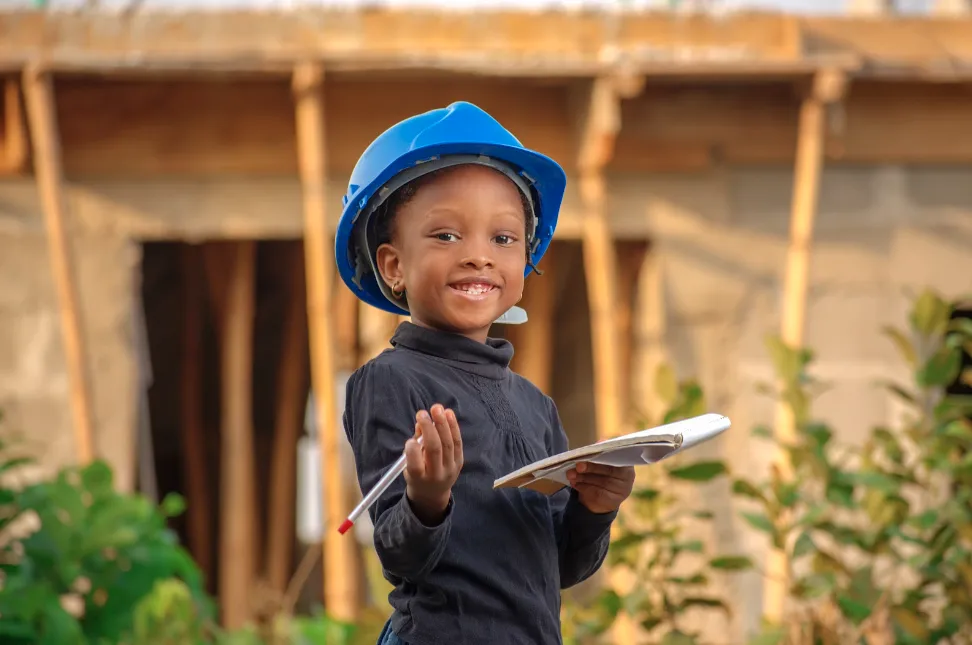
ACTIVITIES
-
Selected List of Picture Books
- The Thingity Jig by Kathleen Doherty (ISBN 978-1561459599) - Bear wants to play and finds a thingity jig. All his friends are sleepy, so bear finds things to add to his thingity jig so he can play.
- The Perfect Plan by Leah Gilbert (ISBN 978-1547605262) - Maya plans the perfect fort. She gathers her materials and starts building, but she runs into problems. She enlists her animal friends to help her solve her problems and execute her plan.
- Rosie Revere, Engineer by Andrea Beaty (ISBN 978-1419708459) - Rosie loves building and creating things but fears failure. Her aunt Rose shows her that failure is on the path to success and that she can grow from her setbacks.
- Jabari Tries by Gaia Cornwall (ISBN 978-1536207163) - Jabari (from Jabari Jumps) is building a flying machine. When things don't go as planned. He gets frustrated and is ready to quit. With support from his dad and sister, Nika, Jabari revisits his creation.
- Just Like Rube Goldberg by Sarah Aronson (ISBN 978-1481476683) - Learn how Rube Goldberg combined different simple machines to solve problems.
- Boxitects by Kim Smith (ISBN 978-1328477200) - Meg loves building with boxes and goes to a special STEM school. She looks forward to school until Simone comes. Simone is another boxitect, and the two girls do not see eye to eye on how to build.
- Play various engineering games on PBSKids.org or TryEngineering (TeachesFirst review). TryEngineering offers many STEM games across various fields and at all age levels.
- Watch a TEDed video about different elements of engineering. Use EdPuzzle (TeachersFirst review) to add notes for students to view, quizzes, and more to help students focus on the content in the video.
- Challenge students to build a birdhouse. (To incorporate literature, pair the activity with The Best Nest by P. D. Eastman - ISBN 978-0394800516). Create a class book to share with family and friends that includes pictures of student-created birdhouses along with audio descriptions of how students built their birdhouses. Book Creator (TeachersFirst review) is an easy-to-use book creation tool for students of all ages.
- Learn more about the Engineering Design Process with this video from CrashCourseKids. Test the design process by making a Balloon Hovercraft.
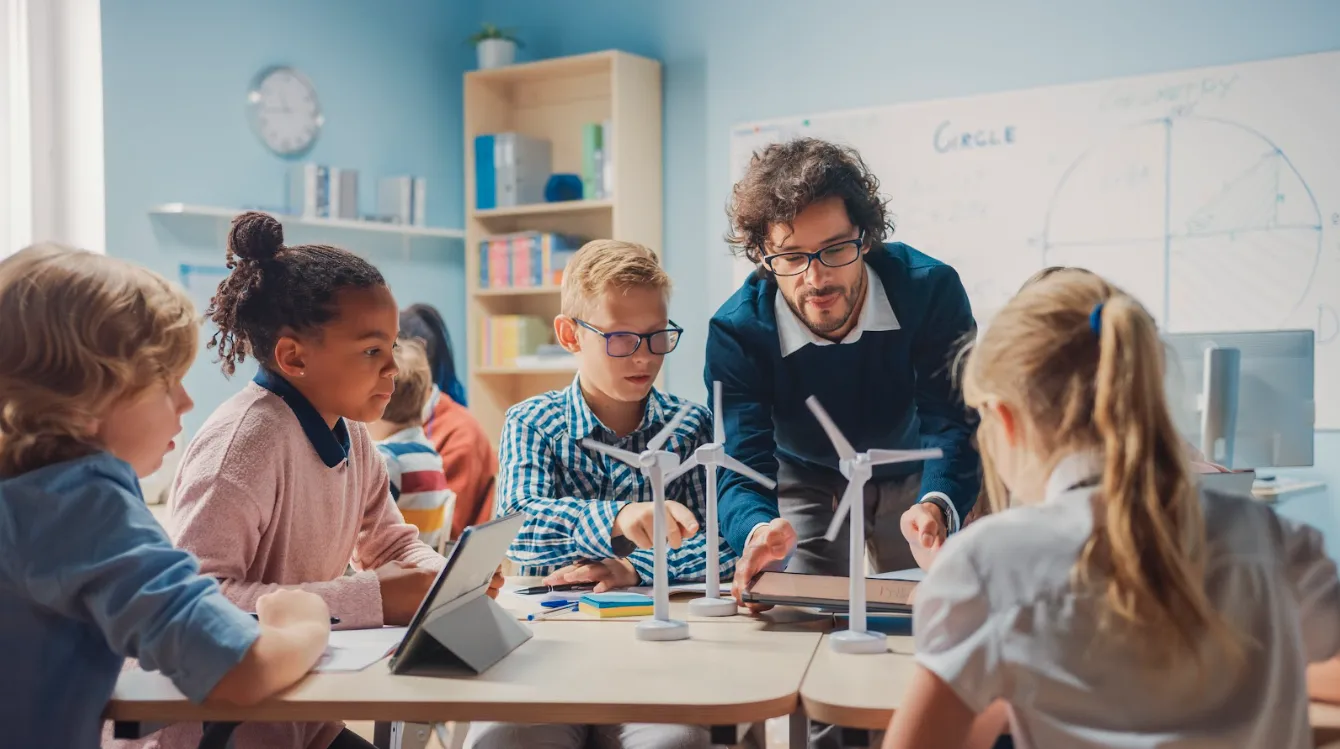
EXTENSIONS
-
Pair Engineering and Coding
- Encourage students to create a maze in the classroom. Use any handy materials - textbooks, boxes, blocks, etc. If robots (Sphero, Beebots, Bluebots, Blockley, Dash) are available, students can use digital coding to move the robot through the maze. If robots are unavailable, use arrow cards to move something through the maze.
- Find many more ideas for coding on TeachersFirst Edge Coding Resources located here.
-
Design Squad
- Introduce students to the Design Squad on PBS. Bring the challenge to your classroom with the Design Squad Challenge. For added fun, challenge students to complete a task that appears in a Design Squad episode. After they complete the challenge, show the episode and compare ideas and solutions.
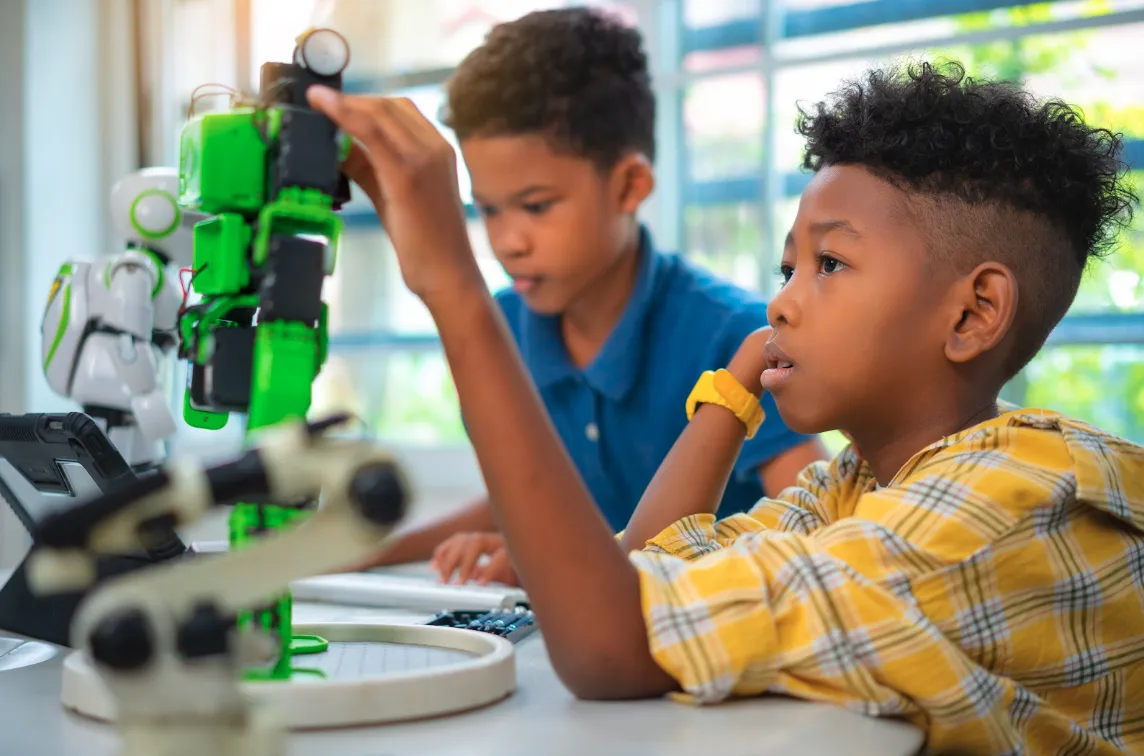
CORRELATION TO STANDARDS
-
AASL National School Library
Standards
- Inquire Shared Foundation, Think Domain - Learners display curiosity and initiative by: 1. Formulating questions about a personal interest or a curricular topic. 2. Recalling prior and background knowledge as context for new meaning.
- Inquire Shared Foundation, Share Domain - Learners adapt, communicate, and exchange learning products with others in a cycle that includes: 1. Interacting with content presented by others. 2. Providing constructive feedback. 3. Acting on feedback to improve. 4. Sharing products with an authentic audience.
- Include Shared Foundation, Share Domain - Learners exhibit empathy with and tolerance for diverse ideas by: 1. Engaging in informed conversation and active debate. 2. Contributing to discussions in which multiple viewpoints on a topic are expressed.
- Include Shared Foundation, Grow Domain - Learners demonstrate empathy and equity in knowledge building within the global learning community by: 1. Seeking interactions with a range of learners.
- Collaborate Shared Foundation, Think Domain - Learners identify collaborative opportunities by: 1. Demonstrating their desire to broaden and deepen understandings. 2. Developing new understandings through engagement in a learning group. 3. Deciding to solve problems informed by group interaction.
- Collaborate Shared Foundation, Create Domain - s Learners participate in personal, social, and intellectual networks by: 1. Using a variety of communication tools and resources. 2. Establishing connections with other learners to build on their own prior knowledge and create new knowledge.
- Collaborate Shared Foundation, Grow Domain - Learners actively participate with others in learning situations by: 2. Recognizing learning as a social responsibility.
- Explore Shared Foundation, Think Domain - Learners develop and satisfy personal curiosity by: 1. Reading widely and deeply in multiple formats and writing and creating for a variety of purposes.
- Explore Shared Foundation, Create Domain - Learners construct new knowledge by: 1. Problem solving through cycles of design, implementation, and reflection.
- Explore Shared Foundation, Share Domain - Learners engage with the learning community by: 3. Collaboratively identifying innovative solutions to a challenge or problem.
- Explore Shared Foundation, Grow Domain - Learners develop through experience and reflection by: 1. Iteratively responding to challenges. 2. Recognizing capabilities and skills that can be developed, improved, and expanded. 3. Open-mindedly accepting feedback for positive and constructive growth.
-
ISTE Standards for Students
- Empowered Learner - 1b. Students build networks and customize their learning environments in ways that support the learning process. 1c. Students use technology to seek feedback that informs and improves their practice and to demonstrate their learning in a variety of ways.
- Knowledge Constructor - 3d. Students build knowledge by actively exploring real-world issues and problems, developing ideas and theories, and pursuing answers and solutions.
- Innovative Designer - 4d. Students exhibit a tolerance for ambiguity, perseverance, and the capacity to work with open-ended problems.
- Global Collaborator - 7c. Students contribute constructively to project teams, assuming various roles and responsibilities to work effectively toward a common goal.
